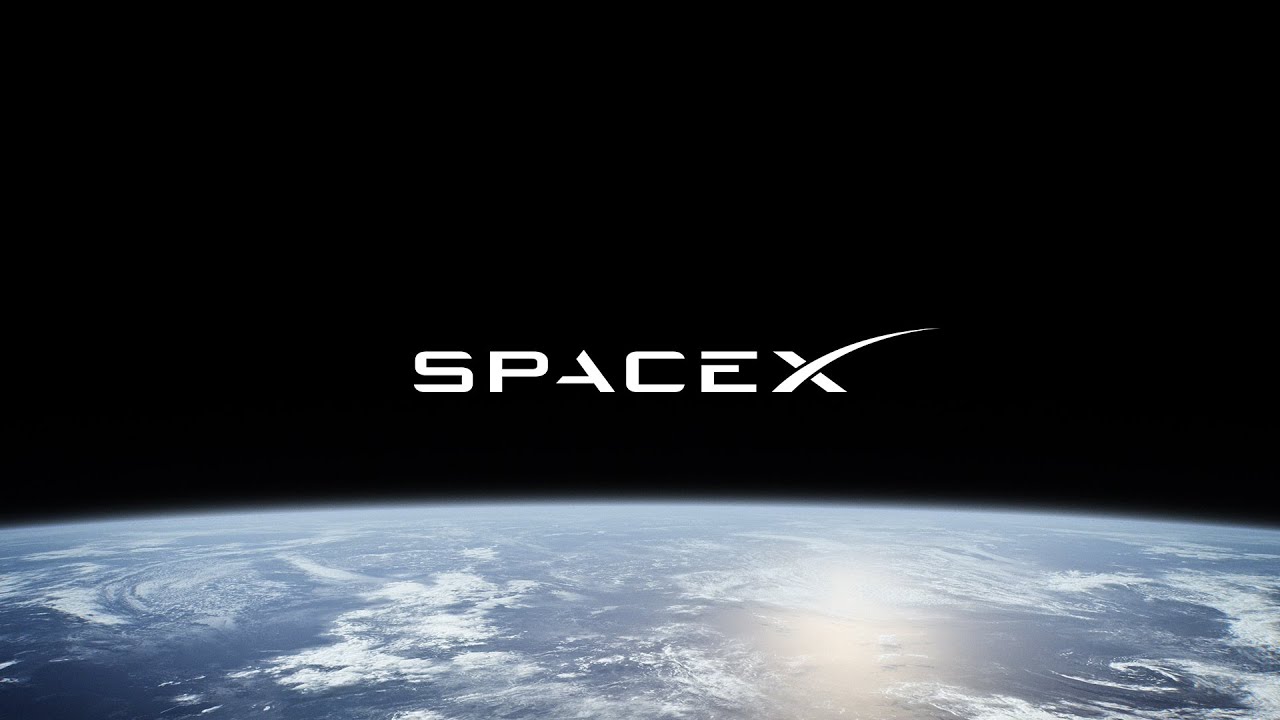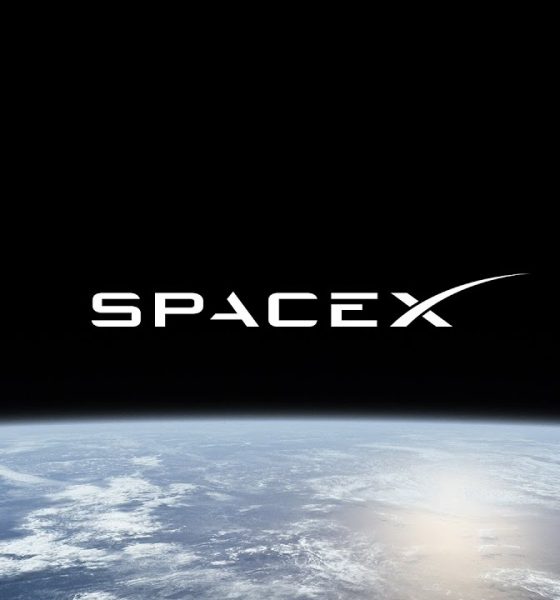The SpaceX and T-Mobile alliance will be life-saving during hurricanes, fires, and other natural disasters. SpaceX Founder, Elon Musk, and T-Mobile CEO, Mike Sievert, announced the new alliance which will end mobile dead zones by launching a new mobile service enabled by Starlink’s second-generation satellites and T-Mobile’s bandwidth.
During tonight’s press conference, Elon Musk said that this new service was meant to provide basic coverage to areas that are currently completely dead. When asked by KRGV’s Cristian von Preysing about the winter freeze, hurricanes, and flooding disasters, both CEOs answered. Mike Sievert emphasized that one of the top priorities of the industry which is a big benefit of this new service is redundancy.
“One of the things about starting next year with messaging as opposed to trying to plunge right in with voice and data right away is that with messaging we should be able to handle a lot of messages. Many, many thousands of messages can be sent. So when you do have outages that happen through natural disasters or otherwise, there’s an opportunity for people at scale to be connected in real-time.
“And Elon was saying, there could be a lag at first but he’s talking about before we reach commercial service. So eventually, as we hit commercial service and even in beta, this is a real-time message where you send a message, and you get an answer. You’re connected.”
He added that by starting out with just messaging, allows T-Mobile to address use cases such as cellular networks being vulnerable to the weather.
Elon Musk added,
“This really is a big deal. Great question to ask because even if an entire region or country lost connectivity because of a severe hurricane or floods or fires or tornadoes, earthquakes there’s so many natural disasters.”
“Even if all the cell towers were taken out your phone would still work.”
This is a game changer for areas that are constantly impacted by disasters such as my own.
During my interview with Elon Musk, I told him about what happened to me and many others during the aftermath of hurricane Ida. The storm knocked out not only all eight Entergy transmission lines in New Orleans but communications as well. I was without power for a week and was one of the lucky ones.
Only people with Verizon were sometimes able to send a text. I have T-Mobile and I was unable to text my friends out of state and tell them that I was okay. Being cut off from communications like that made me feel entirely disconnected from the rest of the world–forgotten, even. And that’s a daunting feeling.
This was on my mind during my interview with Elon Musk. Earlier this summer, Elon Musk invited me down to Giga Texas to interview him on my gem and mineral podcast during the end-of-quarter push.
“When we had Ida, my power was out for a week. When the hurricane hit, the communications and southeast Louisiana were completely wiped out. We were using–I forgot the name of the app but Cajun Navy uses this app to rescue people. They’d go from place to place to place. It just kind of made me think of that–Starlink.”
“Starlink would definitely help organizations like the Cajun Navy as well as others just to be able to communicate better, especially with the government [agencies, I meant to say]. And not just in my area but in other areas, too.”
“It would be cool to see something like that on a more–installed on your phone to keep people connected.”
Elon told me that a phone is able to act like a short-range walkie-talkie but that SpaceX could create a WiFi bridge.
“Certainly one’s phone is capable of behaving at least as a short-range walkie-talkie even if it’s not connected to the internet in any way. We could basically create a WiFi bridge. Is that what you’re talking about?”
“Just something to keep people connected during the disasters you don’t have to worry about a friend is missing and they can call and say ‘hey I’m okay power’s out we’re conserving battery,” I told him.
Tonight’s news will do exactly this.
Your feedback is important. If you have any comments, or concerns, or see a typo, you can email me at johnna@teslarati.com. You can also reach me on Twitter @JohnnaCrider1

Elon Musk
Elon Musk proposes Grok 5 vs world’s best League of Legends team match
Musk’s proposal has received positive reception from professional players and Riot Games alike.
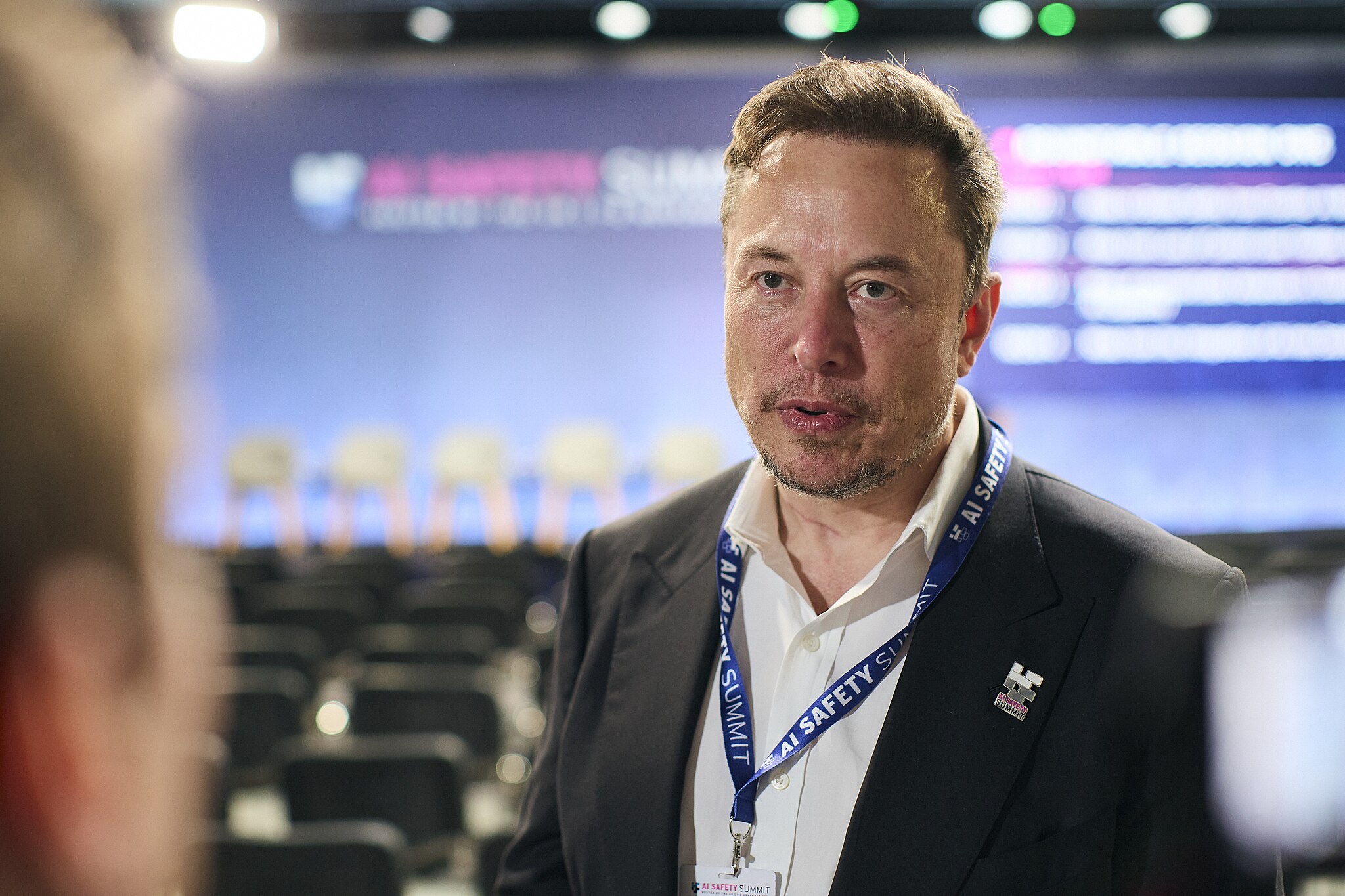
Elon Musk has proposed a high-profile gaming challenge for xAI’s upcoming Grok 5. As per Musk, it would be interesting to see if the large language model could beat the world’ best human League of Legends team with specific constraints.
Musk’s proposal has received positive reception from professional players and Riot Games alike, suggesting that the exciting exhibition match might indeed happen.
Musk outlines restrictions for Grok
In his post on X, Musk detailed constraints to keep the match competitive, including limiting Grok to human-level reaction times, human-speed clicking, and viewing the game only through a camera feed with standard 20/20 vision. The idea quickly circulated across the esports community, drawing commentary from former pros and AI researchers, as noted in a Dexerto report.
Former League pro Eugene “Pobelter” Park expressed enthusiasm, offering to help Musk’s team and noting the unique comparison to past AI-versus-human breakthroughs, such as OpenAI’s Dota 2 bots. AI researcher Oriol Vinyals, who previously reached Grandmaster rank in StarCraft, suggested testing Grok in RTS gameplay as well.
Musk welcomed the idea, even responding positively to Vinyals’ comment that it would be nice to see Optimus operate the mouse and keyboard.
Pros debate Grok’s chances, T1 and Riot show interest
Reactions weren’t universally optimistic. Former professional mid-laner Joedat “Voyboy” Esfahani argued that even with Grok’s rapid learning capabilities, League of Legends requires deep synergy, game-state interpretation, and team coordination that may be difficult for AI to master at top competitive levels. Yiliang “Doublelift” Peng was similarly skeptical, publicly stating he doubted Grok could beat T1, or even himself, and jokingly promised to shave his head if Grok managed to win.
T1, however, embraced the proposal, responding with a GIF of Faker and the message “We are ready,” signaling their willingness to participate. Riot Games itself also reacted, with co-founder Marc Merrill replying to Musk with “let’s discuss.” Needless to say, it appears that Riot Games in onboard with the idea.
Though no match has been confirmed, interest from players, teams, and Riot suggests the concept could materialize into a landmark AI-versus-human matchup, potentially becoming one of the most viewed League of Legends events in history. The fact that Grok 5 will be constrained to human limits would definitely add an interesting dimension to the matchup, as it could truly demonstrate how human-like the large language model could be like in real-time scenarios.
Tesla has passed a key milestone, and it was one that CEO Elon Musk initially mentioned more than nine years ago when he published Master Plan, Part Deux.
As per Tesla China in a post on its official Weibo account, the company’s Autopilot system has accumulated over 10 billion kilometers of real-world driving experience.
Tesla China’s subtle, but huge announcement
In its Weibo post, Tesla China announced that the company’s Autopilot system has accumulated 10 billion kilometers of driving experience. “In this respect, Tesla vehicles equipped with Autopilot technology can be considered to have the world’s most experienced and seasoned driver.”
Tesla AI’s handle on Weibo also highlighted a key advantage of the company’s self-driving system. “It will never drive under the influence of alcohol, be distracted, or be fatigued,” the team wrote. “We believe that advancements in Autopilot technology will save more lives.”
Tesla China did not clarify exactly what it meant by “Autopilot” in its Weibo post, though the company’s intense focus on FSD over the past years suggests that the term includes miles that were driven by FSD (Beta) and Full Self-Driving (Supervised). Either way, 10 billion cumulative miles of real-world data is something that few, if any, competitors could compete with.
Advertisement
–>
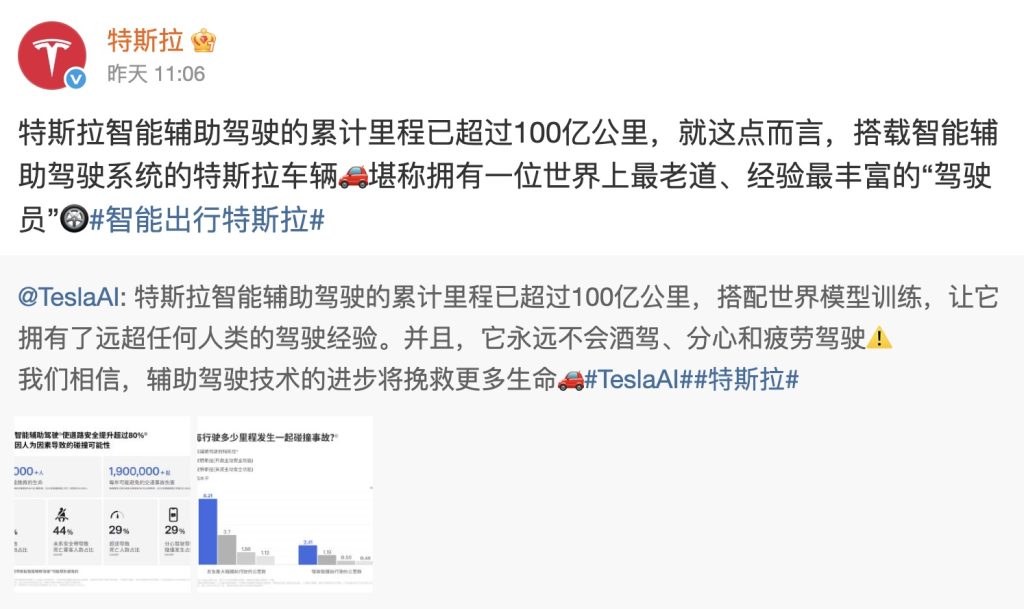
Elon Musk’s 10-billion-km estimate, way back in 2016
When Elon Musk published Master Plan Part Deux, he outlined his vision for the company’s autonomous driving system. At the time, Autopilot was still very new, though Musk was already envisioning how the system could get regulatory approval worldwide. He estimated that worldwide regulatory approval will probably require around 10 billion miles of real-world driving data, which was an impossible-sounding amount at the time.
“Even once the software is highly refined and far better than the average human driver, there will still be a significant time gap, varying widely by jurisdiction, before true self-driving is approved by regulators. We expect that worldwide regulatory approval will require something on the order of 6 billion miles (10 billion km). Current fleet learning is happening at just over 3 million miles (5 million km) per day,” Musk wrote.
It’s quite interesting but Tesla is indeed getting regulatory approval for FSD (Supervised) at a steady pace today, at a time when 10 billion miles of data has been achieved. The system has been active in the United States and has since been rolled out to other countries such as Australia, New Zealand, China, and, more recently, South Korea. Expectations are high that Tesla could secure FSD approval in Europe sometime next year as well.
News
Elon Musk’s Boring Company reveals Prufrock TBM’s most disruptive feature
As it turns out, the tunneling startup, similar to other Elon Musk-backed ventures, is also dead serious about pursuing reusability.
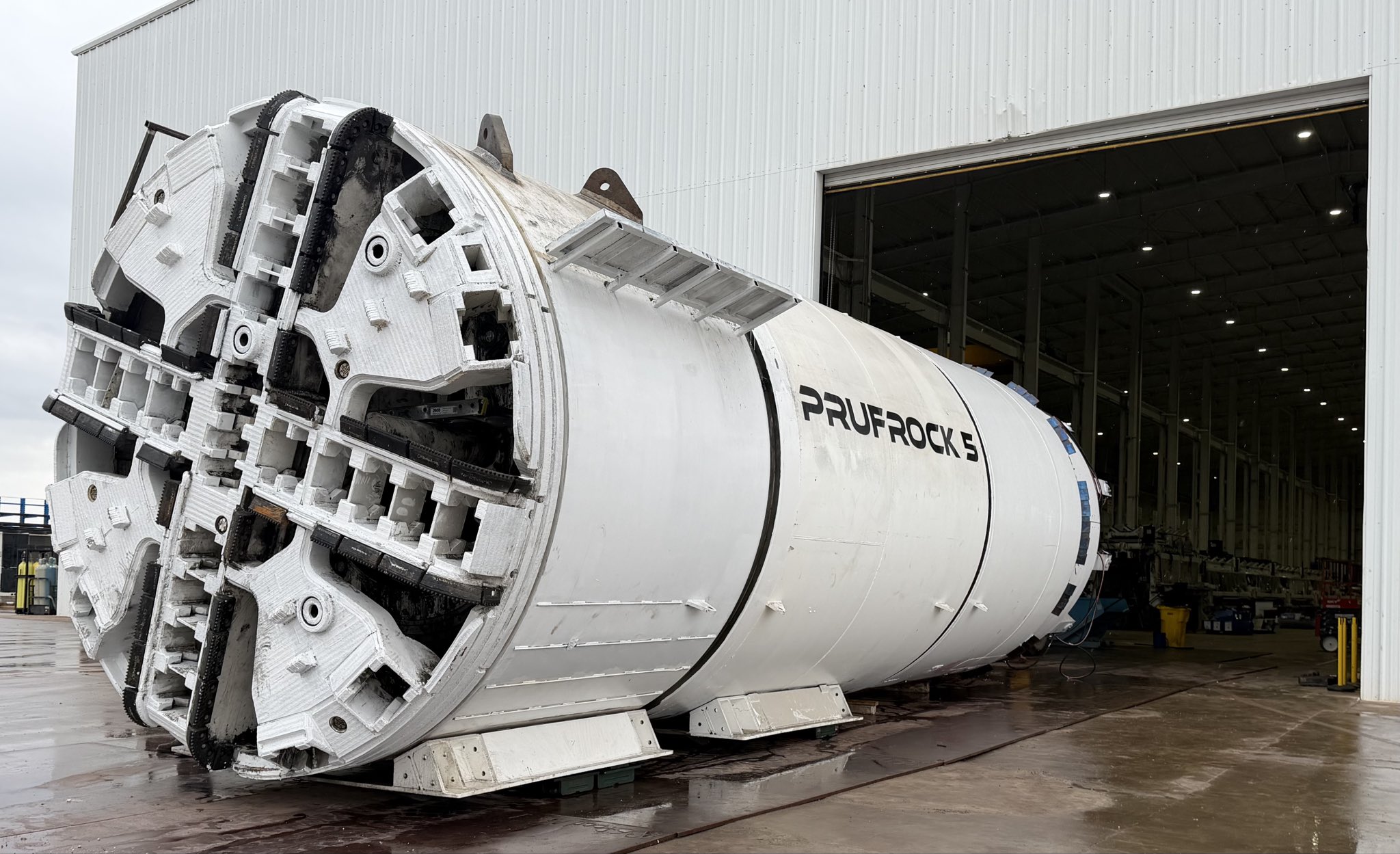
The Boring Company has quietly revealed one of its tunnel boring machines’ (TBMs) most underrated feature. As it turns out, the tunneling startup, similar to other Elon Musk-backed ventures, is also dead serious about pursuing reusability.
Prufrock 5 leaves the factory
The Boring Company is arguably the quietest venture currently backed by Elon Musk, inspiring far fewer headlines than his other, more high-profile companies such as Tesla, SpaceX, and xAI. Still, the Boring Company’s mission is ambitious, as it is a company designed to solve the problem of congestion in cities.
To accomplish this, the Boring Company would need to develop tunnel boring machines that could dig incredibly quickly. To this end, the startup has designed Prufrock, an all-electric TBM that’s designed to eventually be fast enough as an everyday garden snail. Among TBMs, such a speed would be revolutionary.
The startup has taken a step towards this recently, when The Boring Company posted a photo of Prufrock-5 coming out of its Bastrop, Texas facility. “On a rainy day in Bastrop, Prufrock-5 has left the factory. Will begin tunneling by December 1. Hoping for a step function increase in speed,” the Boring Company wrote.
Prufrock’s quiet disruption
Interestingly enough, the Boring Company also mentioned a key feature of its Prufrock machines that makes them significantly more sustainable and reusable than conventional TBMs. As per a user on X, standard tunnel boring machines are often left underground at the conclusion of a project because retrieving them is usually more expensive and impractical than abandoning them in the location.
As per the Boring Company, however, this is not the case for its Prufrock machines, as they are retrieved, upgraded, and deployed again with improvements. “All Prufrocks are reused, usually with upgrades between launches. Prufrock-1 has now dug six tunnels,” the Boring Company wrote in its reply on X.
The Boring Company’s reply is quite exciting as it suggests that the TBMs from the tunneling startup could eventually be as reusable as SpaceX’s boosters. This is on brand for an Elon Musk-backed venture, of course, though the Boring Company’s disruption is a bit more underground.
News
Tesla accused of infringing robotics patents in new lawsuit
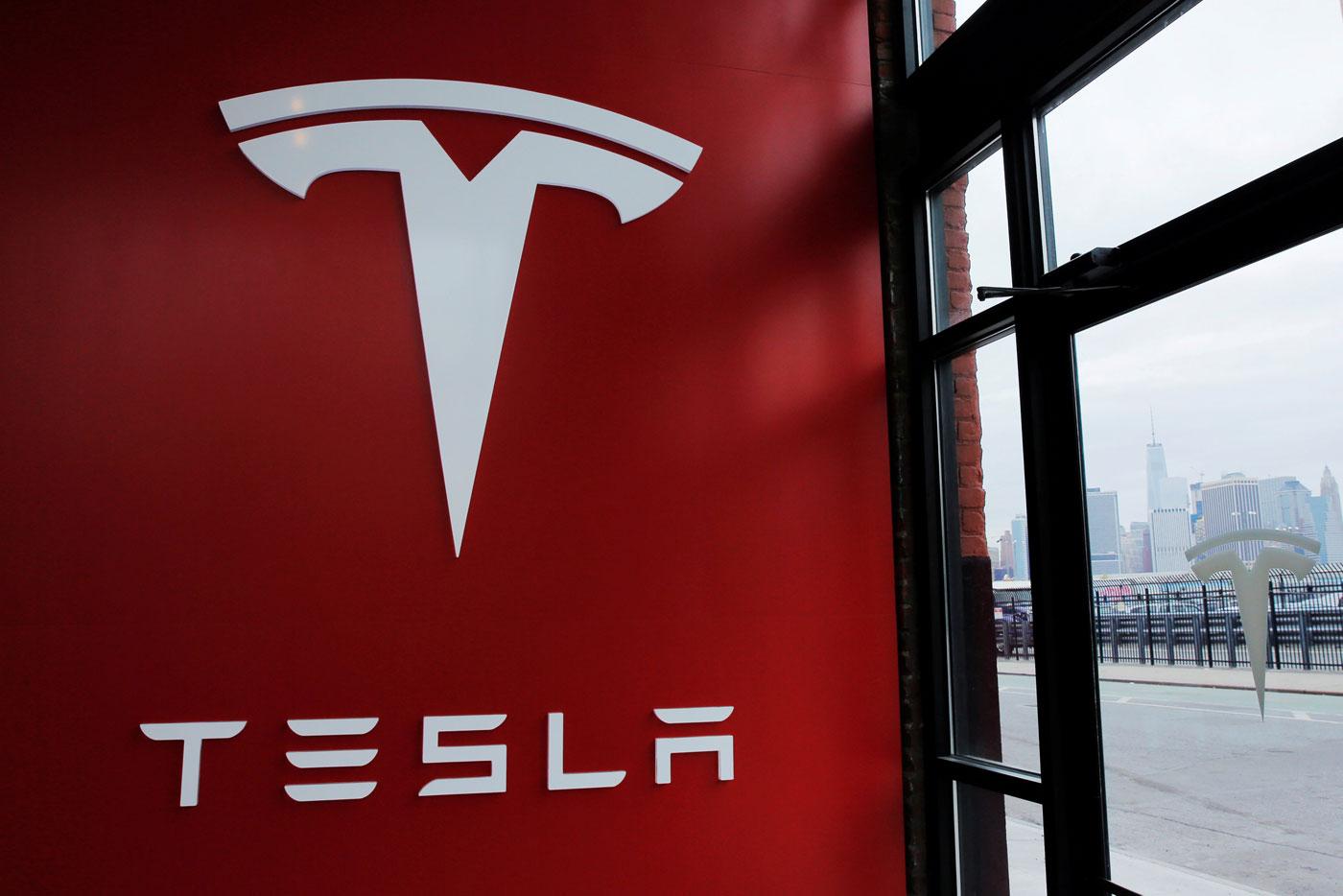
Tesla is being accused of infringing robotics patents by a company called Perrone Robotics, which is based out of Charlottesville, Virginia.
The suit was filed in Alexandria, Virginia, and accuses Tesla of knowingly infringing upon five patents related to robotics systems for self-driving vehicles.
The company said its founder, Paul Perrone, developed general-purpose robotics operating systems for individual robots and automated devices.
Perrone Robotics claims that all Tesla vehicles utilizing the company’s Autopilot suite within the last six years infringe the five patents, according to a report from Reuters.
Tesla’s new Safety Report shows Autopilot is nine times safer than humans
One patent was something the company attempted to sell to Tesla back in 2017. The five patents cover a “General Purpose Operating System for Robotics,” otherwise known as GPROS.
The GPROS suite includes extensions for autonomous vehicle controls, path planning, and sensor fusion. One key patent, U.S. 10,331,136, was explicitly offered to Tesla by Perrone back in 2017, but the company rejected it.
The suit aims to halt any further infringements and seeks unspecified damages.
This is far from the first suit Tesla has been involved in, including one from his year with Perceptive Automata LLC, which accused Tesla of infringing on AI models to interpret pedestrian/cyclist intent via cameras without licensing. Tesla appeared in court in August, but its motion to dismiss was partially denied earlier this month.
Tesla also settled a suit with Arsus LLC, which accused Autopilot’s electronic stability features of infringing on rollover prevention tech. Tesla won via an inter partes review in September.
Most of these cases involve non-practicing entities or startups asserting broad autonomous vehicle patents against Tesla’s rapid iteration.
Tesla typically counters with those inter partes reviews, claiming invalidity. Tesla has successfully defended about 70 percent of the autonomous vehicle lawsuits it has been involved in since 2020, but settlements are common to avoid discovery costs.
The case is Perrone Robotics Inc v Tesla Inc, U.S. District Court, Eastern District of Virginia, No. 25-02156. Tesla has not yet listed an attorney for the case, according to the report.
